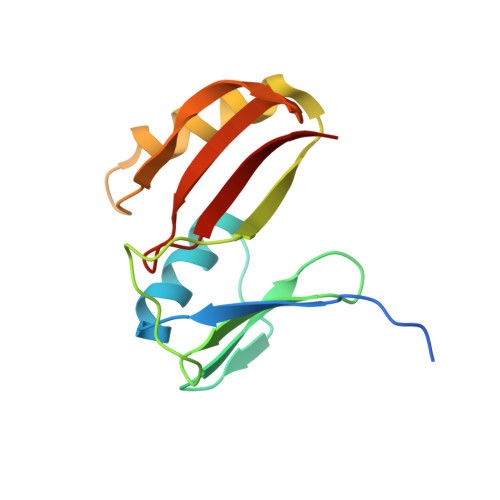Atomic resolution structure of EhpR: phenazine resistance in Enterobacter agglomerans Eh1087 follows principles of bleomycin / mitomycin C resistance in other bacteria.
Yu, S., Vit, A., Devenish, S., Mahanty, H.K., Itzen, A., Goody, R.S., Blankenfeldt, W.(2011) BMC Struct Biol 11: 33-33
- PubMed: 21849072
- DOI: https://doi.org/10.1186/1472-6807-11-33
- Primary Citation of Related Structures:
3SK1, 3SK2 - PubMed Abstract:
The phenazines are redox-active secondary metabolites that a large number of bacterial strains produce and excrete into the environment. They possess antibiotic activity owing to the fact that they can reduce molecular oxygen to toxic reactive oxygen species. In order to take advantage of this activity, phenazine producers need to protect themselves against phenazine toxicity. Whereas it is believed that phenazine-producing pseudomonads possess highly active superoxide dismutases and catalases, it has recently been found that the plant-colonizing bacterium Enterobacter agglomerans expresses a small gene ehpR to render itself resistant towards D-alanyl-griseoluteic acid, the phenazine antibiotic produced by this strain. To understand the resistance mechanism installed by EhpR we have determined its crystal structure in the apo form at 2.15 Å resolution and in complex with griseoluteic acid at 1.01 Å, respectively. While EhpR shares a common fold with glyoxalase-I/bleomycin resistance proteins, the ligand binding site does not contain residues that some related proteins employ to chemically alter their substrates. Binding of the antibiotic is mediated by π-stacking interactions of the aromatic moiety with the side chains of aromatic amino acids and by a few polar interactions. The dissociation constant KD between EhpR and griseoluteic acid was quantified as 244 ± 45 μM by microscale thermophoresis measurements. The data accumulated here suggest that EhpR confers resistance by binding D-alanyl-griseoluteic acid and acting as a chaperone involved in exporting the antibiotic rather than by altering it chemically. It is tempting to speculate that EhpR acts in concert with EhpJ, a transport protein of the major facilitator superfamily that is also encoded in the phenazine biosynthesis operon of E. agglomerans. The low affinity of EhpR for griseoluteic acid may be required for its physiological function.
- Department of Physical Biochemistry, Max Planck Institute of Molecular Physiology, Otto-Hahn-Straße 11, 44227 Dortmund, Germany.
Organizational Affiliation:
















